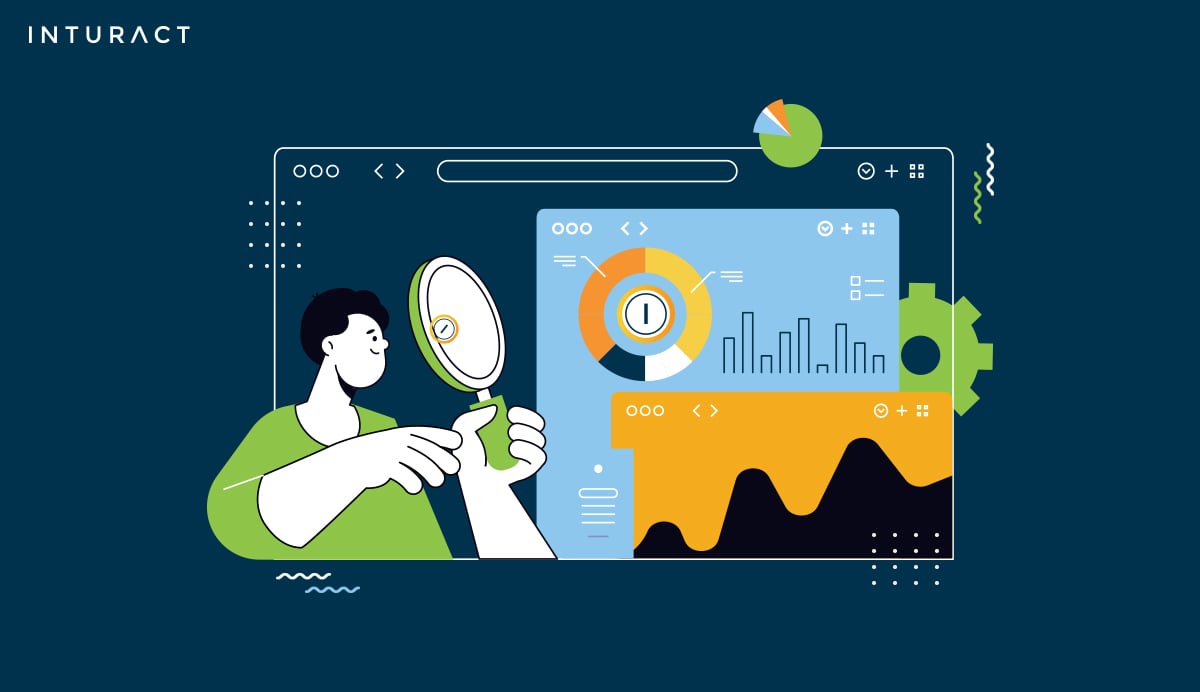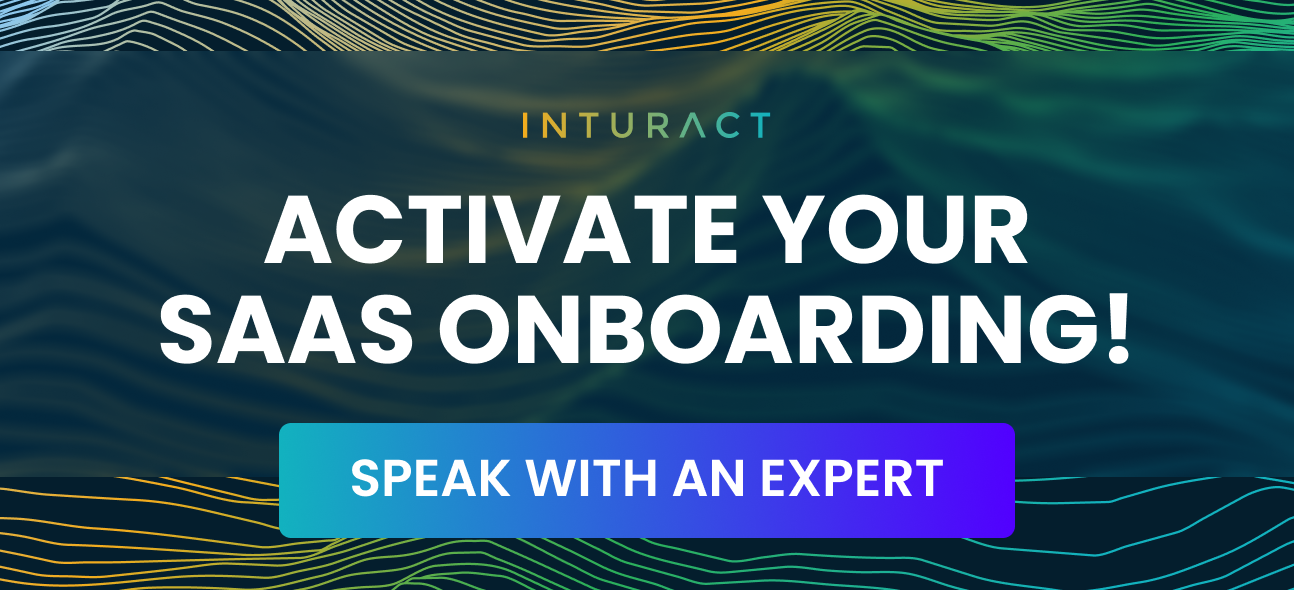Data Science as a Growth Lever for SaaS Businesses

If you’re like most SaaS companies we interact with, you wish you had a crystal ball that could show you exactly what your customers want and how to keep them coming back for more. What if we told you that SaaS data science can provide that crystal ball for you?
We’re not blowing smoke here. That’s the real power of leveraging data science for SaaS businesses just like yours. Collecting and analyzing data helps SaaS companies gain valuable insights into customer behavior, product usage, and market trends. This information can be used to make smart decisions about product development, marketing strategies, and customer retention efforts.
Data science also helps SaaS businesses better understand their customers, and to create personalized experiences that keep users engaged and satisfied. While implementing data science does come with some challenges, partnering with experts like Inturact can help SaaS companies unlock the full potential of their data to drive growth. If this sounds good to you, keep reading.
Understanding Data Science: The Secret Weapon for SaaS Success
Data science is the key to unlocking hidden insights and making informed decisions that can skyrocket your business growth. But what exactly is data science, and why is it so important for SaaS companies?
At its core, data science is all about collecting, analyzing, and interpreting vast amounts of data to uncover patterns, trends, and opportunities. For SaaS businesses, this data comes from a variety of sources, such as:
- User interactions with your product
- Customer feedback
- Market research, etc…
Through leveraging data science techniques, such as machine learning and predictive analytics, SaaS companies can gain a deep understanding of their customers’ needs, preferences, and behaviors. This knowledge is invaluable when it comes to making data-driven decisions that can improve user experience, increase customer satisfaction, and ultimately drive revenue growth.
But data science isn’t just about making predictions. It’s also about optimizing your product, marketing, and sales strategies based on real-world insights. The truth is, data science is a must-have if you hope to be successful.
From Guesswork to Greatness: How Data Science Fuels Smart Decision Making
Let’s assume that you’re at a crossroads with your SaaS product. Maybe you want to implement new features, but you’re not sure if it’s worth the investment. Or maybe you’re trying to decide which marketing channels to focus on, but are concerned about ROI. Data science can help with decisions that can make or break your business. Data-driven decision making is all about using hard evidence to guide your strategies, rather than relying on intuition or assumptions.
Product Development: Building Features That Users Love
Analyzing user behavior and feedback gives you a deeper understanding of what your customers really want and need. This will help you prioritize feature requests, identify pain points, and create a roadmap that aligns with your users’ expectations.
Marketing: Maximizing Your ROI and Reach
Your customer data helps you identify your most valuable segments, understand their preferences and behaviors, and tailor your messaging and channels accordingly. Through the tracking of metrics like click-through rates, conversion rates, and customer lifetime value, you can determine which channels (i.e. email, social media, or paid advertising) are delivering the best results, and adjust your strategy accordingly.
Customer Retention: Keeping Users Engaged and Loyal
By analyzing user behavior and engagement patterns, you can identify the factors that contribute to churn and take proactive steps to keep your customers happy and loyal.
For example, you might use predictive analytics to identify users who are at risk of churning based on their activity (or lack thereof). Armed with this knowledge, you can reach out to these users with personalized offers, incentives, or support to help them get more value from your product.
Decoding Your Customer Insights: How Data Analytics Reveals What Makes Them Tick
Without customers, you wouldn’t have a product to sell, let alone a company to run. But what motivates them to sign up, stick around, and spread the word about your product? Data science gives you a secret window into your customers’ minds.
Behavioral Analytics: Understanding How Users Interact with Your Product
One of the most powerful ways to leverage data analytics is through behavioral tracking. By monitoring how users navigate your product, which features they use most often, and where they tend to get stuck or drop off, you can identify patterns and insights that will help you optimize the user experience.
For example, let’s say you notice that a significant portion of users are abandoning your onboarding process at a particular step. By drilling down into the data, you might discover that the step is confusing or buggy, prompting users to give up in frustration. Armed with this insight, you can tweak the onboarding flow to be more intuitive and user-friendly, increasing the likelihood that users will stick around and become loyal customers.
Preference Analysis: Tailoring Your Product to Your Users’ Needs
Another key aspect of customer insights is understanding what your users want and need from your product. Analyzing data on feature usage, customer feedback, and support requests provides a clear picture of which aspects of your product are resonating with users and which ones are falling flat.
Predictive Analytics: Anticipating Your Customers’ Next Moves
Analyzing historical data and using machine learning algorithms helps you identify patterns and trends that will help you anticipate what your users will do next. For example, you might use predictive analytics to identify which users are most likely to upgrade to a paid plan based on their usage patterns and demographic data. With this knowledge, you can target these users with personalized offers and incentives that will encourage them to take the leap and become paying customers.
The Power of Personalization: How Data Analysis Can Make Your Users Feel Like VIPs

It’s no longer enough to just have a great product. In fact, it really never was. To truly stand out and build lasting relationships with your users, you need to make them feel special with personalization. Personalization is all about tailoring your user experience and marketing messages to the unique needs, preferences, and behaviors of individual customers.
Customized User Experiences: Making Your Product Feel Like Home
One of the most powerful ways to use personalization is by customizing the user experience based on each individual’s behavior and preferences. Analyzing data on how users interact with your product gives you the ability to create targeted experiences that feel intuitive and effortless.
For example, let’s say you have a project management SaaS product. By analyzing data on which features each user engages with most frequently, you can create personalized dashboards that surface the tools and information they need most, right at their fingertips. Alternatively, you could use machine learning algorithms to suggest new features and workflows based on each user’s unique work style and goals.
Targeted Marketing Messages: Speaking Directly to Your Users’ Needs
Personalization isn’t just about the user experience within your product. It’s also about how you communicate with your users through marketing messages and campaigns.
Analyze data on user behavior, demographics, and interests and you can create targeted marketing messages that speak directly to each user’s unique needs and pain points.
By making your marketing messages feel relevant and valuable to each individual user, you can increase conversions, revenue, and customer lifetime value.
The Future of Personalization: AI-Powered Experiences
As data analysis techniques become more sophisticated, the possibilities for personalization are only going to expand. In particular, artificial intelligence (AI) and machine learning are poised to revolutionize the way SaaS companies create tailored experiences for their users.
For example, AI-powered chatbots can use natural language processing and sentiment analysis to provide personalized support and recommendations based on each user’s unique needs and emotions. Or, machine learning algorithms can analyze user behavior in real time and dynamically adjust the user experience to optimize for engagement and satisfaction.
Data Science Demystified: Navigating the Challenges and Considerations
Implementing data science in your SaaS business can be a game-changer, but it’s not without its challenges. From data quality to privacy concerns, there are a number of obstacles and considerations that can trip up even the most data-savvy companies.
The Data Quality Quandary: Garbage In, Garbage Out
One of the biggest challenges in data science is ensuring the quality and accuracy of your data. After all, if you’re making decisions based on flawed or incomplete data, you’re not going to get the results you’re hoping for. As the saying goes, “garbage in, garbage out.”
To overcome this challenge, it’s important to have robust data governance processes in place. This means establishing clear standards for data collection, storage, and management, and regularly auditing your data to ensure it’s accurate, consistent, and up-to-date. It also means investing in data cleaning and preprocessing techniques to catch and correct any errors or inconsistencies before they can skew your analysis.
The Privacy Puzzle: Balancing Personalization and Protection
Another key consideration in data science is privacy. As you collect and analyze more and more data on your users, it’s important to ensure that you’re doing so in a way that respects their privacy and complies with relevant regulations like GDPR and CCPA.
To navigate this challenge, it’s important to be transparent about your data practices and give users control over their data. This means clearly communicating what data you’re collecting, how you’re using it, and how users can opt out if they choose. It also means putting strong security measures in place to protect user data from breaches or unauthorized access.
The Integration Conundrum: Breaking Down Data Silos
Another common challenge in data science is integrating data from multiple sources and systems. In many SaaS companies, data is spread across a variety of tools and platforms, from marketing automation to customer support to product analytics. This can create data silos that make it difficult to get a holistic view of your customers and your business.
To overcome this challenge, it’s important to invest in data integration and data warehousing solutions that can bring all your data together in one place. This might mean building custom integrations between your various tools and platforms, or investing in a third-party data integration platform that can handle the heavy lifting for you.
Unleashing Your Data Potential with Inturact: Your Partner in SaaS Growth
Implementing data science in your SaaS business can be a game-changer, but it’s not without its challenges. That’s where Inturact comes in. As a leading data science consulting agency specializing in SaaS growth, Inturact has the expertise, experience, and tools to help you overcome obstacles and unlock the full potential of your data.
With our proven methodology and commitment to your success, we can help you:
– Develop a customized data science roadmap aligned with your goals
– Extract actionable insights from your data to drive growth
– Build predictive models to improve customer retention and engagement
– Create personalized experiences that delight your users
– Transfer knowledge and build data science capabilities within your team.
If you’re ready to take your SaaS growth to the next level, there’s no better partner than Inturact. Contact us today to learn more about how we can help you unleash your data potential and achieve your business goals.



